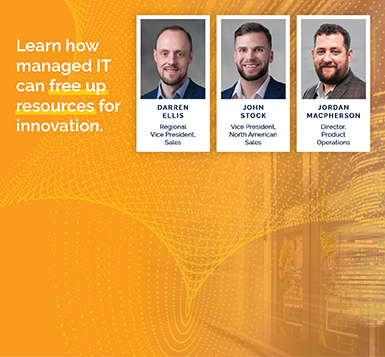The ABCs of Stretching an Education IT Spend
Park Place Hardware Maintenance
Getting the most of your IT spend is as easy as 1-2-3.
As educational institutions at all levels seek stability from pandemic interruptions, IT strategies and related budgets are reemerging as top priorities. The shift to remote learning put a bright spotlight on IT capabilities, and much-needed upgrades. IT leaders within the education sphere are working to do more than ever within increasingly tight budgets.
9 Tips for Optimizing Your Educational Institution’s IT Spend
There are proven ways to get the most of a school system’s or educational institution’s IT spend—and they look a lot like the methods being used by corporations, governments, and non-profits. Here are nine tips worth focusing on:
1. Hone the budget process.
It won’t typically make money materialize, but getting the budget conversation right is important. Invite stakeholders to provide input and return the favor by being fully transparent. Also institute measures to ensure that the IT budget aligns with overall education goals and isn’t a cul de sac off the main education highway.
2. Buy more—but not the best.
The most powerful PCs, servers, and other equipment on the market are designed for extremely intense workloads. Today’s pre-owned IT equipment is more than adequate for most educational needs. There may be exceptions when cutting-edge hardware is warranted, but make sure to note this in advance and not allow the sales process to increase specifications and decrease affordability.
3. Leverage bulk purchases.
On the surface, this is obvious. Roll the year’s (or semester or other timeframe’s) purchasing into one big order and get multiple quotes to identify the best discount. But it’s also possible to go further. A county-wide bundle—beyond the school system—can lead to even better deals from vendors. There are also opportunities for partnerships within the state and with different types of institutions.
4. Do away with the obsolete.
When pinching pennies, it can be tempting to retain any piece of equipment. Sadly, the cost of storing and maintaining obsolete technology, not to mention the added complexity of dealing with media for film projectors, cassette players, VCRs, etc., makes retaining the old school stuff a money-loser. Available funds should be spent on long-lived, modern gear, not on propping up dying technologies.
5. Implement a “hand me down” strategy.
There are dead technologies and then there’s older gear. It’s generally not worth repairing PCs older than 5 years, but storage and server equipment is often good for eight years or more. If it doesn’t fit the purpose for which it was originally intended, reallocating such hardware for less intensive functions is often viable. There are also component-upgrade strategies that can enhance lifespan and save capital.
6. Embrace open source.
Software accounts for more than 30% of IT spending in most businesses, and it’s little different in education. Professional-grade open-source packages exist for almost every need: O/S, word processing, CAD design, spreadsheets, image editing, and so on. Carefully decide when paying for software makes sense and when the savings of open source make it the better choice.
7. Enter the cloud.
The availability of cloud-based services may be one of the greatest innovations to affect education. By utilizing processing power and storage that reside off-premises, cloud services reduce pressures on IT staff. They also enable access to the capabilities from anywhere and any machine, making integration throughout a school district, access for teachers at home, and other formerly “tough tasks” nearly effortless. Additionally, cloud-only computers, such as Netbooks, can provide all the functionality needed for students in the classroom, teachers, or administrators at a fraction of the cost of a full-fledged PC.
8. Standardize.
Move toward a single hardware and software configuration for each main type of installation (e.g., classroom PC, administrator PC, etc.). This maximizes bulk purchasing power while reducing maintenance costs, limiting spares inventory requirements, and minimizing training needed for support staff. What’s more, it facilitates legacy compatibility down the road.
9. Focus on training.
Every device and application needs instructions and training materials, so staff understands what it is, how to use it, and most importantly, why it is useful. Without such information, the shiny new things included in a tight education budget just won’t get used—and staff and students will suffer.
The pandemic has changed many facets of life and business, but the most important advice from the experts is consistent: Start with goal-setting. Technology is only useful if it serves a purpose. Figure out the objectives, then decide how IT can support them.
Park Place Technologies can help stretch your education institution’s IT budget with our world-class service and support for after-warranty data center storage, server, and networking equipment, which includes third-party data center hardware maintenance, data center professional services, infrastructure managed services, enterprise network monitoring and management, and hardware sales.



